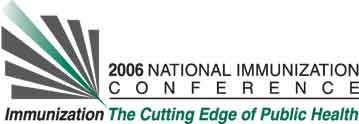David A. Neumann, National Partnership for Immunization, P.O. Box 18481, Baltimore, MD, USA
Learning Objectives for this Presentation:
1. Characterize the approaches, staff time and resources that devoted to assessing immunization coverage
2. Identify which state agencies are responsible for assessment and enforcement
3. Discuss how medical, religious and philosophical exemptions are claimed
Background:
Vaccination rates among children in day care vary among states. Such variability is inconsistent with state immunization requirements for enrollment in day care. The number of children exempted from immunizations also differs among states. The reasons for these discrepancies are complex.
Objectives:
This study examined staffing, funding and other factors that affect assessment practices, enforcement of entry requirements, criteria for claiming exemptions and the public health implications of admitting non-compliant children into day care.
Methods:
Information about state immunization assessment practices was obtained from the CDC's 2004 survey of preschool assessment practices. A survey of state immunization program managers provided additional information about assessment and enforcement activities.
Results:
Assessment efforts vary from state-to-state, ranging from 1-4 full- or part-time public health staff to 20 or more working for one to six months. Compliance is usually determined by day care operators. Enforcement responsibilities may reside with the state public health, social services or education department or combinations of these agencies. Most states rely on 317 funds to support assessment and enforcement. VFC, state and/or local funds support these activities in some states. Less than 50% of the states impose fines or other penalties for enrolling non-compliant children. Approximately 26% of states require legal documentation of religious or philosophical exemptions. More than 250,000 non-compliant children were estimated to be enrolled in day care during the 2003-2004 school year.
Conclusions:
Staffing and funding, and the delineation of state agency responsibilities contribute to the variability in assessment practices. Weak enforcement mechanisms contribute to the admission of non-compliant children, which increases the risk for outbreaks of vaccine-preventable diseases.
Web Page:
www.partnersforimmunization.org
See more of Posters
See more of The 40th National Immunization Conference (NIC)

